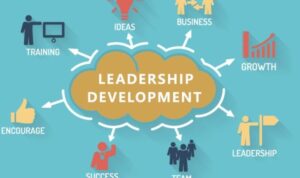Project Management Techniques takes center stage as we dive into a world where strategy meets execution, offering a blend of innovation and practicality that ensures project success.
From traditional methodologies to cutting-edge tools, this comprehensive guide explores the key aspects of project management techniques to empower you in your project endeavors.
Overview of Project Management Techniques
Project management techniques refer to the methodologies, strategies, and tools used to plan, execute, monitor, and control projects effectively. These techniques are crucial in ensuring that projects are completed on time, within budget, and to the satisfaction of stakeholders.
Using project management techniques is essential in various industries to streamline processes, increase efficiency, minimize risks, and achieve desired outcomes. By implementing these techniques, organizations can improve project delivery, enhance communication among team members, and boost overall productivity.
Popular Project Management Techniques
- Agile Methodology: A flexible approach that involves breaking down tasks into small increments and adapting to changes quickly.
- Scrum Framework: An iterative framework that focuses on delivering value to customers through short, time-boxed iterations called sprints.
- Waterfall Method: A sequential approach where each phase of the project must be completed before moving on to the next phase.
- Kanban System: A visual system that helps teams manage work by visualizing tasks on a board and limiting work in progress.
Traditional Project Management Techniques
Traditional project management techniques, such as Waterfall, have been widely used in various industries for decades. These methodologies follow a linear approach where each phase of the project is completed before moving on to the next.
Comparison of Traditional vs. Agile Methodologies
In contrast to traditional project management techniques, agile methodologies focus on iterative and incremental development. Agile allows for more flexibility and adaptability to changing requirements throughout the project lifecycle.
- Traditional methodologies emphasize detailed planning and documentation upfront, while agile methodologies prioritize working software and customer collaboration.
- Traditional techniques are best suited for projects with well-defined requirements and stable scope, whereas agile is more suitable for projects with evolving requirements and uncertain scope.
- Traditional project management often involves a strict hierarchy and top-down approach, while agile promotes self-organizing teams and close collaboration.
Real-world Examples of Successful Traditional Projects
One notable example of a successful project managed using traditional techniques is the construction of the Empire State Building in New York City. The project followed a sequential process from design to construction, demonstrating the effectiveness of the Waterfall methodology in large-scale construction projects.
Another example is the launch of the Boeing 787 Dreamliner aircraft. Despite facing challenges and delays, the project management team utilized traditional techniques to overcome obstacles and deliver a successful product to the market.
Agile Project Management Techniques

Agile project management is a flexible and collaborative approach to managing projects that focuses on continuous improvement, flexibility, and customer satisfaction. It emphasizes adaptive planning, iterative development, and rapid responses to change.
Key Principles of Agile Project Management
- Customer collaboration over contract negotiation
- Responding to change over following a plan
- Individuals and interactions over processes and tools
- Working software over comprehensive documentation
Different Agile Methodologies
There are several agile methodologies used in project management, each with its own unique approach:
- Scrum: A popular framework that divides work into short, iterative work cycles called sprints, with daily stand-up meetings to track progress.
- Kanban: Focuses on visualizing work and limiting work in progress to improve flow and delivery.
- Extreme Programming (XP): Emphasizes customer satisfaction, continuous feedback, and frequent releases.
Benefits and Challenges of Agile Project Management Techniques
Implementing agile project management techniques can offer several benefits, such as:
- Increased flexibility and adaptability to change
- Improved communication and collaboration among team members
- Enhanced customer satisfaction through early and frequent deliverables
However, there are also challenges associated with agile project management, including:
- Adapting to the fast-paced and iterative nature of agile methodologies
- Ensuring consistent stakeholder involvement and feedback throughout the project
- Managing scope changes and prioritizing requirements effectively
Hybrid Project Management Techniques

Hybrid project management involves blending traditional and agile project management techniques to achieve optimal results in modern project management practices.
Significance of Hybrid Project Management
Organizations often combine traditional project management methodologies with agile approaches to leverage the strengths of both methods. By adopting a hybrid approach, companies can tailor their project management strategies to suit the specific needs of each project while maintaining flexibility and adaptability.
- Improved Flexibility: Hybrid project management allows organizations to respond to changes and uncertainties more effectively compared to rigid traditional methods.
- Enhanced Control: By integrating traditional and agile techniques, project managers can maintain control over project scope and timelines while promoting collaboration and innovation.
- Optimal Risk Management: The hybrid approach enables teams to address potential risks proactively by combining the structured risk management of traditional methods with the iterative nature of agile practices.
Examples of Hybrid Project Management
Many organizations blend traditional project management techniques, such as Waterfall, with agile methodologies like Scrum or Kanban to achieve a hybrid project management approach. For instance, a company may use Waterfall for the initial planning and design phases of a project and then switch to Scrum for development and testing to ensure faster delivery and adaptability.
Advantages and Disadvantages of Hybrid Project Management
- Advantages:
- Customization: Hybrid project management allows organizations to tailor project management strategies to meet the unique requirements of each project.
- Improved Collaboration: By combining traditional and agile techniques, teams can enhance collaboration, communication, and efficiency throughout the project lifecycle.
- Adaptability: The hybrid approach provides the flexibility to adjust project plans and processes based on changing circumstances or stakeholder feedback.
- Disadvantages:
- Complexity: Managing a hybrid project requires a deep understanding of both traditional and agile methodologies, which can increase the complexity of project management.
- Integration Challenges: Integrating different project management techniques may pose challenges in terms of tools, processes, and team dynamics.
- Training Needs: Team members may require additional training to effectively transition between traditional and agile practices within a hybrid project.
Tools and Software for Project Management: Project Management Techniques
Project management tools and software play a crucial role in helping teams stay organized, collaborate effectively, and meet project deadlines. These tools streamline processes, enhance productivity, and improve overall project outcomes.
Popular Project Management Tools
- Trello: Trello is a visual collaboration tool that uses boards, lists, and cards to organize tasks and projects. It allows teams to track progress, assign tasks, and communicate in real-time.
- Asana: Asana is a flexible project management tool that helps teams manage tasks, projects, and workflows. It offers features such as task assignments, due dates, and project timelines.
- Jira: Jira is a powerful tool used for issue tracking, bug tracking, and project management. It is commonly used in software development projects to track bugs, plan sprints, and manage agile workflows.
How Project Management Software Enhances Productivity and Collaboration
Project management software automates repetitive tasks, centralizes project information, and provides real-time visibility into project progress. This enhances team collaboration by allowing team members to communicate effectively, share files, and track project updates in one place. By streamlining processes and improving communication, project management software helps teams work more efficiently and productively.
Selecting the Right Project Management Tool
When selecting a project management tool, it is essential to consider the specific requirements of the project. Factors to consider include the size of the team, the complexity of the project, the need for customization, and integration with other tools. It is important to choose a tool that aligns with the project’s goals, team dynamics, and workflow processes to ensure successful project execution.
Effective Communication in Project Management
Effective communication plays a crucial role in the success of any project management endeavor. It ensures that all team members are on the same page, reduces misunderstandings, and fosters a collaborative environment.
Importance of Clear Communication
Clear and concise communication is essential for project success. It helps in setting expectations, defining roles and responsibilities, and keeping everyone informed about project progress. Without effective communication, the project can face delays, scope creep, and ultimately, failure.
- Establish a Communication Plan: Create a detailed communication plan outlining how, when, and what information will be shared among team members. This helps in setting expectations and ensuring everyone is aware of the communication channels.
- Use Multiple Communication Channels: Utilize various communication tools such as emails, project management software, video conferences, and regular meetings to ensure that information is conveyed effectively to all stakeholders.
- Active Listening: Encourage active listening among team members to ensure that everyone understands the message being communicated. This helps in avoiding misunderstandings and misinterpretations.
- Provide Regular Updates: Keep all stakeholders informed about project progress, milestones, and any potential roadblocks. Regular updates help in building trust and transparency within the team.
Handling Conflict Through Communication
Conflict is inevitable in any project, but effective communication can help in resolving conflicts and challenges efficiently.
“Addressing conflicts early and openly can prevent them from escalating and impacting the project timeline.”
- Encourage Open Dialogue: Create a safe space for team members to express their concerns and opinions. Encourage open dialogue to address conflicts before they escalate.
- Active Problem-Solving: Instead of focusing on blame, encourage team members to focus on finding solutions to the conflict. This approach fosters collaboration and ensures that the project stays on track.
- Seek Feedback: Regularly seek feedback from team members on the effectiveness of communication within the project. Use this feedback to make necessary adjustments and improvements to the communication strategy.
Risk Management Techniques in Projects
Risk management in the context of project management involves identifying, assessing, and mitigating potential risks that could impact the successful completion of a project. By proactively addressing risks, project managers can minimize negative outcomes and increase the chances of project success.
Proactive Risk Identification
Effective risk management starts with identifying potential risks before they occur. This involves brainstorming with team members, stakeholders, and experts to anticipate possible challenges that could arise during the project lifecycle. By proactively identifying risks, project teams can develop strategies to address them before they escalate and impact the project timeline or budget.
Risk Assessment and Mitigation
Once risks are identified, the next step is to assess their potential impact and likelihood of occurrence. This allows project managers to prioritize risks based on their severity and develop mitigation plans to reduce their impact. Mitigation strategies may include risk avoidance, risk transfer, risk reduction, or risk acceptance, depending on the nature of the risk and its potential consequences.
Examples of Effective Risk Management
Effective risk management techniques have saved projects from failure by addressing potential risks before they escalate. For example, a software development project may identify the risk of key team members leaving the project unexpectedly. By proactively cross-training team members and documenting critical processes, the project can mitigate the risk of knowledge loss and ensure continuity in case of staff turnover.
Project Planning and Scheduling Techniques
Project planning and scheduling are crucial aspects of project management that lay the foundation for successful project execution. By creating a detailed plan and schedule, project managers can effectively allocate resources, set realistic timelines, and ensure that all tasks are completed on time.
Work Breakdown Structure (WBS), Project Management Techniques
- The Work Breakdown Structure (WBS) is a hierarchical decomposition of the project into smaller, more manageable components.
- It helps in breaking down the project into deliverables, work packages, and tasks, making it easier to assign responsibilities and track progress.
- By creating a WBS, project managers can identify the scope of work, allocate resources efficiently, and establish a clear roadmap for the project.
Critical Path Method (CPM)
- The Critical Path Method (CPM) is a project management technique used to determine the longest sequence of dependent tasks and the shortest time in which a project can be completed.
- It helps in identifying critical tasks that directly impact the project timeline and allows project managers to prioritize activities accordingly.
- By using CPM, project managers can identify bottlenecks, allocate resources effectively, and ensure that the project is completed within the specified timeframe.
Best Practices for Creating Realistic Project Plans and Schedules
- Involve key stakeholders in the planning process to ensure alignment with project goals and objectives.
- Break down the project into manageable tasks with clear deliverables and timelines.
- Allocate resources based on skill sets and availability, considering dependencies and constraints.
- Regularly monitor and update the project plan and schedule to adapt to changes and mitigate risks.
- Use project management tools and software to streamline the planning and scheduling process and improve collaboration among team members.





